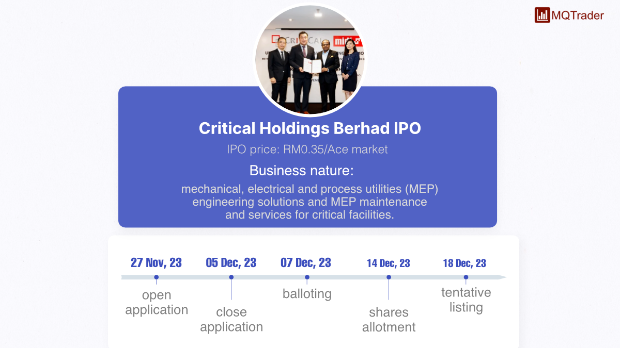Industrial Production Index (IPI) - IPI Rebounds
PublicInvest
Publish date: Mon, 13 May 2019, 09:51 AM
OVERVIEW
IPI staged a strong rebound in March that bucked the export trend despite the chaos in global trade. It was 3.1% higher YoY for the month, significantly ahead of February (1.7% YoY) and almost matching January’s 3.2% despite trade stresses being ratcheted up to a higher level beyond February. The rebound in March’s IPI was driven by the turnaround in manufacturing (4.1%; February: 3.7%) and sustained electricity demand (March: 4.8%; February: 4.9%) though dampened by continued contraction in mining (March: -0.2%; February: -5.0%). 1Q19 IPI average of 2.7% is our lowest since 3Q18 (2.4%) but should not be a source of concern as it was caused by an uncharacteristic situation (i.e. trade war) and is bound to recover once global trade normalizes.
The rebound in manufacturing performance was a surprise in view of E&E export contraction in March (-1.9%) thanks to a re-stoking of activity. We think that the manufacturing sector delivered a fair 1Q19 performance (+4.0% YoY) given the chaos in global trade that remains until today.
On specifics, manufacturing IP growth accelerated to 4.1% in March (February: 3.7%) pulled up by stronger petroleum, chemical, rubber and plastic products (March: 3.7%; February: 1.6%) and steady E&E activity (March: 2.7%; February: 3.1%) though offset by “others” especially transport equipment and other manufacturers (March: 6.1%; February: 7.1%). The sustained E&E activity is a surprise and a decoupling from export momentum (-1.9%). Despite this, E&E’s 1Q19 average of 3.2% is still noticeably lower than 2018’s average of 5.9%.
Sluggish E&E performance was consistent with tepid global PMI manufacturing indices (April: 50.3; March: 50.6; February: 50.6; January: 50.8), suggesting that manufacturers remained cautious ahead of the outcome of US-China trade negotiations. Mining sector produced another set of disappointing numbers following its continuous contraction in March amid persistent inconsistencies by crude petroleum (-2.0%), no thanks to production constraints and PETRONAS’s voluntary supply adjustments though natural gas managed to produce a strong rebound for the month (1.4%). Mining sector 1Q19 average of -1.9% was a disappointment as production remained unstable for both sub-sectors.
Headline IPI was also supported by sustained growth in electricity output (March: 4.8%; February: 4.9%) as weather condition remained extreme just like the previous two months. Electricity sector elevated 1Q19 average to 5.8% (2018: 3.7%) though may not sustain due to a one-off situation (i.e. unusually hot weather)
There has yet to be any breakthrough in the US-China trade negotiations even though it has been almost 6 months since the ‘truce’ began (1st December 2018). We opine that the cautious global trade conditions may continue given the lack of signals, hints or directions so far.
ANALYSIS BY SECTOR
Manufacturing. Growth rebounded to 4.1% YoY for the month (February: 3.7%), propelled by the strong rebound by petroleum, chemical, rubber and plastic products (March: 3.7%; February: 1.6%) amid steady E&E activity (March: 2.7%; February: 3.1%). Manufacturing 1Q19 average of 4.0% is below average and therefore may rebound once global trade normalizes. Other sub sectors that showed less-than-inspiring form include transport equipment and other manufacturers, wood products, furniture, paper products, printing and non-metallic and non-metallic mineral products, basic metal and fabricated metal products
Below are the details for the month:
- F&B and tobacco (March: 6.8%; February: 6.3%)
- textile, wearing apparel, leather products and footwear (March: 4.9%; February: 3.6%)
- wood products, furniture, paper products, printing (March: 5.0%; February: 5.5%)
- petroleum, chemical, rubber and plastics products (March: 3.7%; February: 1.6%)
- non-metallic mineral products, basic metal, fabricated metal products (March: 3.5%; February: 4.6%)
- E&E (March: 2.7%; February: 3.1%) and
- transport equipment and other manufactures (March: 6.1%; February: 7.1%)
E&E performance is sluggish thus far (1Q19: 3.2%; 1Q18: 5.6%) but could rebound once there are positive developments in trade negotiations. Growth slipped to -0.4% on a MoM and seasonally-adjusted basis against -0.3% in February.
Mining: Mining sector was still struggling in March, though they managed to narrow the contraction markedly, hurt by persistent pullback in crude petroleum but soothed by the rebound in natural gas. It slipped -0.2% YoY in March against -5.0% the month before on the back of uninspiring 2018 growth (- 2.4%). Mining sector performance may normalize in the months ahead given the expectation of output rebound by natural gas though this may be offset by crude petroleum production constraints and extension of voluntary supply adjustments by PETRONAS. 1Q19 performance of -1.9% remained a letdown, emerging as our lowest since 3Q18 (-5.3%). The details of the month’s performance are as follows:
- natural gas (March: 1.4%; February: -5.6%%)
- crude petroleum oils & condensates crude oil production (March: -2.0%; February: -4.3%) On a MoM and SA basis, the mining output rebounded significantly to 6.4%, a marked rise against -6.8% in February.
Electricity: Output remained elevated in March following the heat spell in the previous two months (March: 4.8%; February: 4.9%). 1Q19 average of 5.8% may not sustain and therefore, likely to ease in the next quarter. On a MoM basis, the index ticked 0.3% higher, a rebound against -3.1% in February.
OUTLOOK
Trade negotiations have entered its fifth-month with no sign of ending any time soon. Despite the longer-than-expected time taken to negotiate the terms and conditions we have yet to get any resolution whether interim or partial, pushing us to expect that jittery conditions may continue. Despite this uncertainty, we think that Malaysia’s exports and IPI is ripe for a rebound once trade regularizes driven by the normalization in demand, ample capacity and competitive Ringgit. The current weak form showed by high frequency data is one-off, driven by the chaos caused by the US-China trade war.
Source: PublicInvest Research - 13 May 2019
More articles on PublicInvest Research
Created by PublicInvest | Jul 15, 2024






















VenFx
This report say it all... kudos PH.
2019-05-13 10:06